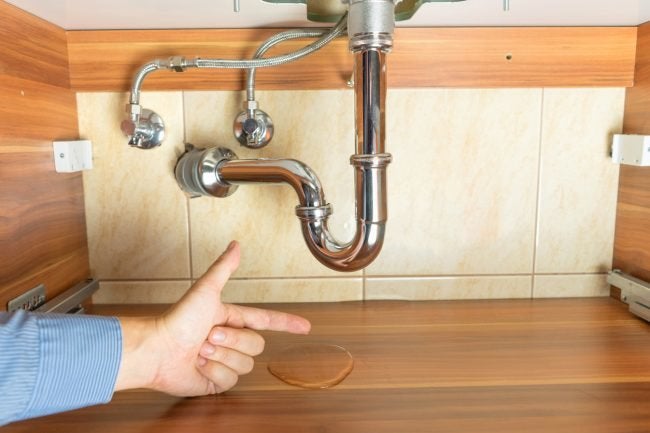How do you actually feel on the subject of Leaking water lines?

Early detection of dripping water lines can mitigate a prospective disaster. Besides saving you cash, it will minimize the aggravation as well as stress. The minute you locate a leakage, calling your plumber for repair work is the best solution. Nevertheless, some little water leakages might not show up. Below are some hacks that assist if you can not detect it with your nude eyes.
1. Check Out the Water Meter
Every home has a water meter. Examining it is a surefire way that aids you find leakages. For beginners, turn off all the water resources. Guarantee nobody will certainly flush, use the faucet, shower, run the washing machine or dishwasher. From there, go to the meter and watch if it will certainly transform. Given that no one is using it, there should be no movements. That indicates a fast-moving leakage if it moves. If you identify no changes, wait a hr or 2 and also examine back once more. This suggests you might have a slow leakage that could even be underground.
2. Check Water Intake
If you spot sudden changes, regardless of your usage being the same, it implies that you have leakages in your plumbing system. An abrupt spike in your bill suggests a fast-moving leakage.
Meanwhile, a stable rise monthly, even with the very same habits, reveals you have a sluggish leak that's additionally slowly rising. Call a plumber to extensively inspect your residential property, particularly if you feel a warm area on your flooring with piping beneath.
3. Do a Food Coloring Examination
When it comes to water intake, 30% comes from bathrooms. If the color in some way infiltrates your bowl during that time without flushing, there's a leak between the storage tank and also bowl.
4. Asses Outside Lines
Don't neglect to check your outdoor water lines too. Ought to water seep out of the connection, you have a loose rubber gasket. One tiny leak can squander bunches of water and spike your water costs.
5. Analyze the circumstance and evaluate
Home owners should make it a habit to inspect under the sink counters as well as also inside cupboards for any bad odor or mold development. These 2 red flags suggest a leak so prompt interest is required. Doing routine inspections, also bi-annually, can conserve you from a significant trouble.
Extra notably, if you understand your house is already old, maintain a watchful eye on your heating units, hoses, pipes etc. Look for stainings as well as compromising as many pipes and also devices have a life expectancy. They will certainly also normally weaken as a result of tear and also wear. Do not wait for it to intensify if you presume leaking water lines in your plumbing system. Call a specialist plumber immediately so you do not end up with a dreadful mess in your home.
Early detection of dripping water lines can reduce a possible disaster. Some small water leakages may not be noticeable. Examining it is a guaranteed way that assists you uncover leaks. One small leakage can waste heaps of water and surge your water costs.
If you think dripping water lines in your plumbing system, do not wait for it to escalate.
WARNING SIGNS OF WATER LEAKAGE BEHIND THE WALL
PERSISTENT MUSTY ODORS
As water slowly drips from a leaky pipe inside the wall, flooring and sheetrock stay damp and develop an odor similar to wet cardboard. It generates a musty smell that can help you find hidden leaks.
MOLD IN UNUSUAL AREAS
Mold usually grows in wet areas like kitchens, baths and laundry rooms. If you spot the stuff on walls or baseboards in other rooms of the house, it’s a good indicator of undetected water leaks.
STAINS THAT GROW
When mold thrives around a leaky pipe, it sometimes takes hold on the inside surface of the affected wall. A growing stain on otherwise clean sheetrock is often your sign of a hidden plumbing problem.
PEELING OR BUBBLING WALLPAPER / PAINT
This clue is easy to miss in rooms that don’t get much use. When you see wallpaper separating along seams or paint bubbling or flaking off the wall, blame sheetrock that stays wet because of an undetected leak.
BUCKLED CEILINGS AND STAINED FLOORS
If ceilings or floors in bathrooms, kitchens or laundry areas develop structural problems, don’t rule out constant damp inside the walls. Wet sheetrock can affect adjacent framing, flooring and ceilings.
https://www.servicemasterbyzaba.com/blog/how-to-detect-water-leakage-in-walls/

Do you enjoy reading about Detecting hidden plumbing leaks? Try to leave a review further down. We'd be glad to hear your feelings about this piece. We are looking forward that you come back again later on. For those who appreciated our post if you please don't forget to share it. Bless you for your time. Visit again soon.
Resolve plumbing disruptions with experts.